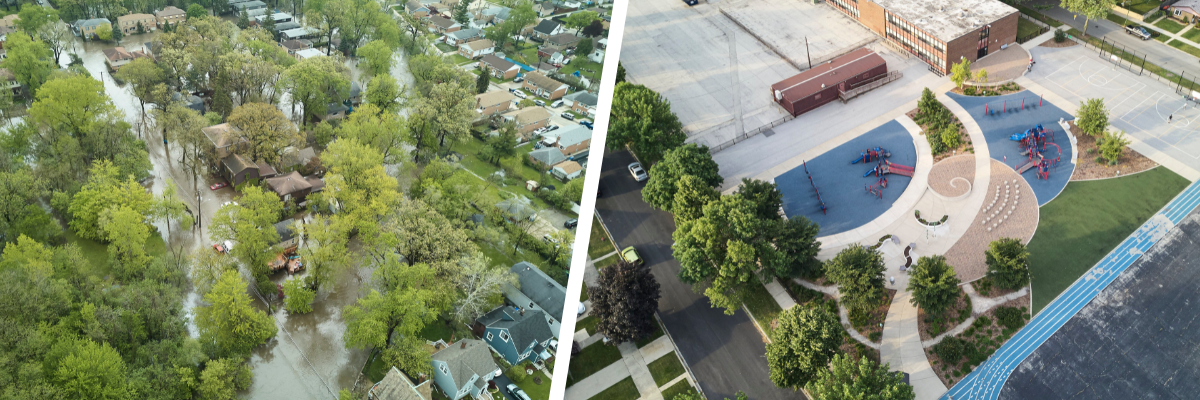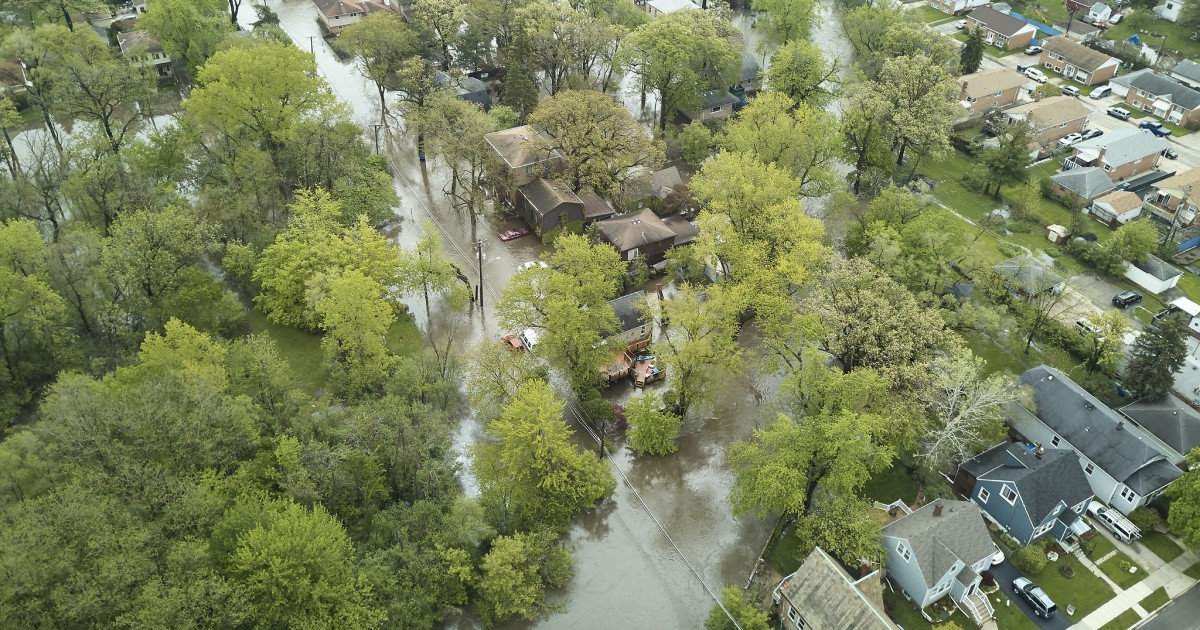Flooding affects nearly every community in northeastern Illinois — and climate change will cause it to become more frequent and intense in the coming decades.
But flooding doesn’t affect all people and communities equally. Decades of disinvestment and marginalization means that a disproportionate number of people of color and people with low incomes tend to live in areas with high flood risk, concentrations of hazardous industries, a lack of tree canopy and park space, and high impervious cover.
As northeastern Illinois governments invest in flood resilience, prioritizing communities that face disproportionate flood impacts will be crucial and will help ensure that residents have access to the resources they need to thrive.
A new guide, Integrating Equity into Flood Resilience Investments, shows engineers, planners, and decision makers why investments must be made equitably, outlines key considerations for integrating equity (from planning and design to maintenance and funding), and highlights successful examples. CMAP developed this guide with support from community-based organizations that provided their expertise on public health, economic and workforce development, housing, and environmental justice — grounding this work in the needs of the communities they represent.

CMAP identifies five ways that local governments, engineers, and planners can advance equity in flood resilience programs, projects, and policies.
1. Use equity-related data to inform investments
When engineers, planners, and emergency managers use equity-related data, resilience investments can be tailored to improve the lives of their most vulnerable residents. Find data specific to this guide on CMAP’s Data Hub.
2. Collaborate with community groups to understand on-the-ground conditions
When community members are not aware of a project until it is well underway, their input is largely symbolic or an exercise to “check the community engagement box.” Beyond proactive engagement on individual projects, maintaining consistent and open lines of communication with community-based organizations can inform governments of the problems that exist, where problems occur most frequently, and the solutions to remediate recurring flooding.
3. Maximize project benefits and reduce unintended consequences
Implementers can maximize both the benefits of resilience investments and community buy-in by identifying project co-benefits that advance community goals, collaborating with non-stormwater entities, and employing measures to reduce unintended consequences.
4. Provide equitable infrastructure maintenance and operations
Municipalities that receive funding are responsible for maintaining infrastructure over its intended lifespan. As more investments are directed to disproportionately impacted communities, municipalities, counties, and other organizations must ensure the investment serves the community over the long term.
5. Reduce barriers to municipal access to funds
State and federal funds play a key role in developing and maintaining flood resilience projects. These funds are particularly important for projects located in communities that lack the ability to independently fund large capital projects. But barriers such as complex applications and match requirements can prevent funds from reaching the communities that need them the most.
Read more about these strategies and see examples from around the region in the flood equity guide.
